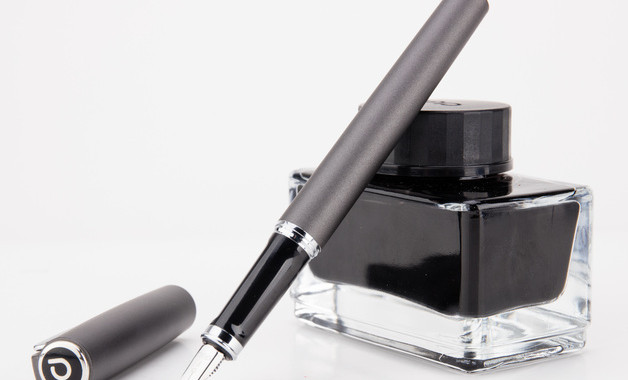
第1篇 初中英语语法总结:选择疑问句 350字
提出两种或两种以上的情况,要求对方选择一种情况回答,这种问句叫做选择疑问句,选择疑问句的两种或两种以上的情况用or连接,回答时不能用yes或no,语调一般是第一种选择用升调,最后一种选择用降调。选择疑问句可以分为一般选择疑问句和特殊选择疑问句两种。
1一般选择疑问句
句型:一般疑问句+or +被选择的情况?
are you a teacher or a student?
你是个老师还是个学生?
i'm a student.
我是个学生。
did you work out the math problem in this way or(in)that way?
你用这种方法还是用那种方法把这道数学题算出来的?
i did it in that way.
我用那种方法算出来的。
2特殊选择疑问句
句型:特殊疑问句,a or b?
which is bigger,beijing or new york?
哪个城市大些,北京还是纽约?
beijing is.北京。
when will he leave for london,today or tomorrow?
他何时动身去伦敦,今天还是明天?
tomorrow.明天。
注意
or之后如果是单数可数名词,必须要加上冠词。
第2篇 初中英语语法总结:一般疑问句 1350字
一、不用疑问词,但需要用yes或no回答的疑问句,叫一般疑问句。句末用问号“?”。
一般疑问句的基本用法及结构 一般疑问句用于对某一情况提出疑问,通常可用yes和no来回答,读时用升调。其基本结构是“be / have / 助动词+主语+谓语(表语)”:
is he interested in going? 他有兴趣去吗?
have you ever been to japan? 你到过日本吗?
does she often have colds? 她常常感冒吗?
did you ask her which to buy? 你问没问她该买哪一个?
二、陈述句变一般疑问句的方法
1. 动词be的疑问式:动词be根据不同的时态和人称可以有am, is, are, was, were等不同形式,可用作连系动词(表示“是”、“在”等)和助动词(用于构成进行时态和被动语态等),但不管何种情况,构成疑问式时,一律将动词be的适当形式置于句首:句型:be动词+主语~?
is your father angry?你父亲生气了吗?
yes,he is.是的,他生气了。
no,he isn't.不,他没生气。
were the babies crying last night?(进行时)
昨天晚上这些孩子们一直在哭吗?
yes,they were.是的,他们在哭。
no,they weren't.不,他们没哭。
is english spoken all over the world?(被动语态)
全世界都说英语吗?
yes,it is.是的。
no,it isn't.不。
2. 动词have的疑问式:动词have根据不同的时态和人称可以有have, has, had等形式,可以用作实意动词和助动词,分以下情况讨论:
① 用作实意动词表示状态,如表示拥有、患病或用于have to表示“必须”等,在构成构成式时可以直接将have, has, had置于句首,也可根据情况在句首使用do, does, did:
does he have [has he] anything to say? 他有什么话要说吗?
do you have [have you] to leave so soon? 你必须这么早走吗?
did you have [had you] any friends then? 他当时有朋友吗?
② 用作实意动词表示动作,如表示“吃(=eat)”、“喝(=drink)”、“拿(=take)”、“收到(=receive)”、“度过(=spend)”等,构成疑问式时不能将have提前至句首,而应在句首使用do, does, did:
does he have breakfast at home? 他在家吃早餐吗?
did you have a good time at the party? 你在晚会上玩得高兴吗?
③ 完成时的一般疑问句
句型:have(has)+主语+动词的过去分词+~?
have you known her since your childhood?
你从童年就认识她吗?
yes,i have.是的。
no,i haven't.不。
过去完成时的一般疑问句
句型:had +主语+动词的过去分词+~?
had he learned about two thousand english
words before he came here?
他来这里以前就已经学了大约两千个单词了吗?
yes,he had.是的。
no,he hadn't.不。
3. 情态动词的疑问式:情态动词的疑问式通常是将情态动词置于句首:
句型:情态动词+主语+动词原形~?
can you bring me some apples?
你能给我拿来些苹果吗?
yes,i can.是的,可以。
no,i can't.不,不可以。
can you speak english? 你会说英语吗?
must i finish the work at once? 我必须马上完成工作吗?
4. 实意动词的疑问式:一般实意动词的疑问式,通常应根据不同时态和人称在句首加助动词do, does, did等:
句型:do(does,did)+主语+动词原形~?
do you go to school every day? 你每天都上学吗?
does the boy like dancing? 这男孩喜欢唱歌吗?
did you see the film last night? 你昨晚看了这部电影吗?
did he do morning exercises yesterday?
昨天他做早操了吗?
yes,he did.是的,他做了。
no,he didn't.不,他没做。
三、一点注意
在一般疑问句的简略回答中使用yes,it is. / yes,i am. / yes,he is. / yes,we are. / yes,she is. 等时,不能使用yes,it's. / yes,i’m. / yes,he's.等这样的缩略形式。但如果是否定形式则可用缩略式,如可用no,he's not.也可用no,he isn't. 另外,若为完整回答,也可用yes,he's…之类的,如说yes,he's a student. / yes,she's busy.等。
第3篇 初中英语语法总结感叹句 550字
表示喜怒哀乐等强烈感情时用感叹句。感叹句分为两种,一种以what引导,一种以how引导。句尾用感叹号“!”。用降调。
what a clever boy he is!
多么聪明的小男孩啊!
how clever the boy is!
这小男孩多聪明啊!
1what引导的感叹句
what a beautiful city it is!
(这是个)多么美丽的城市啊!
句型:(1)what + a/an +形容词+单数可数名词+陈述句(主语+谓语)
what a beautiful city it is!
what an interesting story she told!
(2)what+形容词+复数可数名词/不可数名词+陈述句(主语+谓语)
what expensive watches they are!
what terrible weather it is!
2how引导的感叹句
how hot it is today!今天天气多么热啊!
1.句型:(1)how+形容词/副词+陈述句(主语+谓语)
how cold it is!
how hard he works!
(2)how+陈述句(主语+谓语)
how he loves his son!
(3)how+形容词+a/an+单数可数名词+陈述句(主语+谓语)
how tall a tree it is!
2.how修饰动词时,动词并不提前。
how i want to be a teacher!
我多想当个老师啊!
上述两种感叹句可以互相转换。例如:
what a clever boy he is!→how clever the boy is!
what a cold day it is!→how cold it is!
注意
what和how引导的两种感叹句,在口语中常用简略式,即省略后一部分(陈述句部分)如:
how cold!
多冷啊!
what heavy traffic!
交通多挤啊!
比较
感叹句和特殊疑问句
感叹句:how busy you are!(陈述句语序)
你多么忙啊!
疑问句:how busy are you?(疑问句语序)
你有多忙?
第4篇 初中英语语法总结:陈述句 1700字
陈述句
凡是说明一件事情,提出一个看法,或是表达种心情的句子都是陈述句。大多数的句子都是陈述句,它可以用肯定式和否定式。句末用句号“·”,通常用降调。
we live in beijing.(肯定句)
我们住在北京。
we don’t live in beijing.(否定句)
我们不住在北京。
因为陈述句是英语中最常用的基本句子,我们在讲述时态时,详细地讲述了各种时态的陈述句,可参见第六章~第十一章。
本节侧重于陈述句中的否定结构,现把英语中否定句总结如下:
1 be动词、一般动词(实义动词)、情态动词的否定句
i am not a student. 我不是学生。
i don't know him. 我不认识他。
he can't speak english. 他不会说英语。
1.be动词的否定句
a.句型:主语+be动词+not~.
i wasn't good at english.
我英语不好。
he isn't hungry.
他不饿。
b.进行时和被动语态(现在时、过去时、进行时)都有be动词,所以它们的否定句与be动词的否定句同形。(详见第十三章被动语态)
they aren't cleaning the room.(现在进行时)
他们没在打扫房间。
the child was not looked after.
(过去时的被动语态)
这个孩子以前没有被照顾过。
c.将来时(will,shall)、完成时及情态动词的被动语态不能用be动词的否定句型。
(○) they will not be sent to the front.
(×)they will be not sent to the front.
他们将不会被送到前线。
2.情态动词的否定句
句型:主语+情态动词+ not +动词原形
(详见第十二章中的“情态动词”部分)
i cannot do it myself.
我自己做不了这件事。
you mustn't take the books out.
你们一定不能把书拿出去。
3.一般动词的否定句
句型:主语+ do(does, did)+ not +动词原形
(详见第七、八章)
注意
否定式的缩略形
is not→isn't
are not→aren't
was not→wasn't
were not→ weren't
do not→don't
does not→doesn't
did not→ didn't
can not→can't
will not→ won't
must not→ mustn't
have not→ haven't
has not→ hasn't
had not→hadn't
am not无缩写形式,应为i'm not形式。
he doesn't do his homework every day.
他不是每天都做作业。
they didn't have the class-meeting yesterday.
他们昨天没开班会。
they don't live in shanghai.
他们不住在上海。
4.现在完成时的否定句
句型:主语+ have(has)+ not +动词的过去分词~.
i haven't finished reading the book yet.
这本书我还没读完。
he hasn't had his breakfast yet.
他还没吃早饭呢。
5.过去完成时的否定句
句型:主语+ had + not +动词的过去分词~.
he hadn't finished reading the book by the
end of last month.
截至上月末,他还没看完这本书。
2否定结构应注意事项
1.使用not的部分否定
含有not的句子,如果使用了very,always以及不定代词all,both,every及every的复合词,则表示部分否定。(其余的半否定结构请参见第二章的不定代词部分)
i don't play football very well.
我足球踢得不特别好。
it isn't always hot here in summer.
这儿夏天不总是很热。
比较
i don't play football well.
(全否定)
我足球踢得不好。
it isn't hot here in summer.(全否定)
这儿夏天不热。
2.not的其他否定表示
a. not…at all一点也不
i'm not tired at all.
我一点也不累。(语气强烈)
i don't like it at all.
我一点儿也不喜欢它。
b. not…any more,not…any longer再也不……
i don't live here any longer.
我再也不在这儿住了。
i can not eat any more. =i can eat no more.
我再也不能多吃了。
3.使用not以外的否定词表示否定
a.用no表示:no +名词=not any…一点也不……
there is no wind .= there is not any wind.
一点儿风都没有。
b. never决不(语气比not强烈)
i'll never forget you.
我决不会忘记你。
c. few/little…几乎没有
详见第二章代词<不定代词>部分。
he has few friends.
他几乎没有朋友。
i have little money.我几乎没有钱。
d. no one(=nobody)无人
no one knows the answer.
=nobody knows the answer.
没人知道答案。
e. nothing =not anything什么也没有
i have nothing to do today.
我今天什么也没做。
f. none of…没有任何人;什么都没有
none of them can answer it.
他们之中没有任何一个人能回答。
i eat none of the food.
这些食物中我一样也没吃。
g.含有否定副词seldom(很少)、hardly(几乎不)的句子。
he can hardly write his name.
他几乎写不出他的名字。
we seldom watch tv.
我们很少看电视。
注意
在含有宾语从句的主从复合句中,当主句的谓语动词是think(认为)、believe(相信)等词时,宾语从句谓语的否定,习惯上要前移到主句的谓语上。
i don't think you are right.
我认为你不对。
we don't believe he'll win.
我们相信他不会赢。
注意
none后面必须用of,none of可表示人和物,参见左例f.。而nobody只能表示人,参见左例d.。
3.《too…to》(太…以至于不……)的句型是不使用否定词的否定句子
he is too old to work.
他太老了,不能工作了。
第5篇 初中英语语法总结感叹句参考 500字
what a clever boy he is!
多么聪明的小男孩啊!
how clever the boy is!
这小男孩多聪明啊!
1what引导的感叹句
what a beautiful city it is!
(这是个)多么美丽的城市啊!
句型:(1)what + a/an +形容词+单数可数名词+陈述句(主语+谓语)
what a beautiful city it is!
what an interesting story she told!
(2)what+形容词+复数可数名词/不可数名词+陈述句(主语+谓语)
what expensive watches they are!
what terrible weather it is!
2how引导的感叹句
how hot it is today!今天天气多么热啊!
1.句型:(1)how+形容词/副词+陈述句(主语+谓语)
how cold it is!
how hard he works!
(2)how+陈述句(主语+谓语)
how he loves his son!
(3)how+形容词+a/an+单数可数名词+陈述句(主语+谓语)
how tall a tree it is!
2.how修饰动词时,动词并不提前。
how i want to be a teacher!
我多想当个老师啊!
上述两种感叹句可以互相转换。例如:
what a clever boy he is!→how clever the boy is!
what a cold day it is!→how cold it is!
注意
what和how引导的两种感叹句,在口语中常用简略式,即省略后一部分(陈述句部分)如:
how cold!
多冷啊!
what heavy traffic!
交通多挤啊!
比较
感叹句和特殊疑问句
感叹句:how busy you are!(陈述句语序)
你多么忙啊!
疑问句:how busy are you?(疑问句语序)
你有多忙?
第6篇 初中英语语法对every和each辩解的总结 400字
every和each同属中位限定词,都可与单数名词连用,且意义相近,表示‘每个’,然而every和each并不完全一样,every强调整体概括,each则表示个别概念。例如:
each day is better than the one before.
一天比一天好。
every player was in good form.
每个运动员都处于状态。
如果不特别强调某一意义时,every和each可以互换。 例如:
we want every child to succeed.
我们希望每个孩子都成功。
each child will find his own personal road to success.
每个孩子将会找到他个人的成功之路。
each可以指两个或两个以上的人或东西,every却不能指两个,只能指三个以上的数量。例如:
each sex has its own physical and psychological characteristics.
男女各有其身体上和心理上的特点。(不能说every sex...)
另外,如有其他限定词同时修饰中心词,each可作代词取each of的形式,而every则只能作限定词。例如:
each of my parents gave me presents for christmas.
过圣诞节时我父母每人都给我送了礼物。










